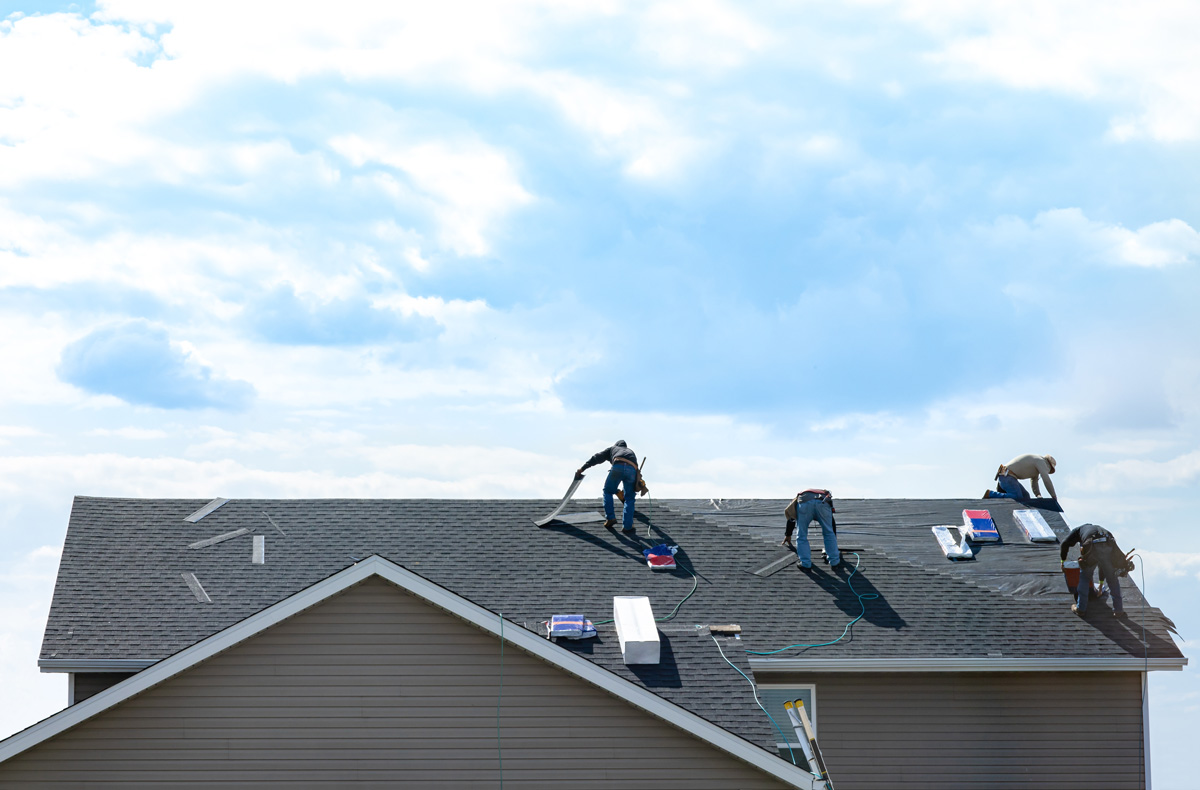Get a expert Roofer to replace your leaky roof.
Get a expert Roofer to replace your leaky roof.
Blog Article
Just How to Examine Different Roofing Options for Your Building Requirements
Examining roof alternatives for your building needs an extensive technique that considers various aspects such as the meant usage of the structure, neighborhood climate conditions, and product attributes. It is essential to weigh the advantages and downsides of various roof covering types, from asphalt roof shingles to steel and clay tiles, while also factoring in first prices and lasting maintenance. Furthermore, understanding power efficiency and visual charm can influence your decision. As you ponder these considerations, one concern stays: which aspects will ultimately direct your option for a lasting and visually pleasing roof covering remedy?
Examining Your Structure's Demands
To properly review roofing options, start by extensively evaluating your structure's requirements. Begin by taking into consideration the structure's intended usage, as various structures may require differing roof covering specs. Household roof coverings usually focus on aesthetics and insulation, while industrial structures might focus on toughness and load-bearing capability.
Following, examine the neighborhood climate conditions that will influence roof covering performance. Aspects such as temperature variations, rainfall levels, and wind patterns can affect product selection and layout. A roof that excels in a warm climate might not perform as well in areas susceptible to heavy snowfall or severe warm.
Furthermore, analyze the structural honesty of your structure. Make certain that the existing framework can support the picked roof materials, specifically if thinking about heavier options. It is likewise vital to evaluate any type of neighborhood building ordinance or regulations that might determine particular demands for roof.

Contrasting Roof Products
When a thorough assessment of your structure's needs has actually been finished, the next action involves contrasting various roof covering products. Each product supplies unique benefits and downsides, making it important to straighten your selection with your particular needs and conditions.
Asphalt tiles are extensively identified for their affordability and convenience of setup, making them a preferred choice for residential structures. On the other hand, steel roofing, recognized for its durability and longevity, can withstand severe climate condition yet may feature a greater preliminary investment.
Clay and concrete ceramic tiles supply exceptional thermal insulation and visual charm, particularly for Mediterranean-style design, yet they call for an even more robust architectural assistance because of their weight. Timber shakes offer an all-natural look and great insulation residential or commercial properties however might require extra maintenance and are at risk to fire hazards.
Examining Expense and Budget Plan
Analyzing your roofing choices requires a careful analysis of price and budget plan factors to consider. The total budget for a roof task makes up several variables, consisting of product expenses, labor expenses, maintenance, and possible long-lasting savings. It is necessary to establish a clear spending plan before checking out certain roofing materials, as this will certainly guide the decision-making procedure and help you prevent overspending.
Begin by getting quotes from several service providers to recognize labor prices in your region. Guarantee that these price quotes include all essential services, such as elimination of the old roofing system, setup, and any kind of additional features, like insulation or ventilation enhancements - Roofing Contractor. Next, assess the price of numerous roof covering products, taking into consideration both preliminary installment costs and expected life-span

Comprehending Energy Performance
Power efficiency plays an essential function in the option of roofing materials and systems, dramatically impacting both energy intake and overall convenience within a building. A well-chosen roofing system can enhance thermal efficiency, reducing the need for home heating and cooling systems, which in turn decreases power costs and lessens environmental effect.
When reviewing roof covering choices, think about products that show instead of soak up heat. Light or reflective roof products can substantially reduce roof covering surface temperatures, resulting in lower power use during hot months. Additionally, correct insulation and ventilation are vital to optimize the energy performance of the whole roof. Insulation stops heat transfer, while air flow minimizes heat build-up in the attic room area.
An additional essential variable is the roof covering system's longevity and maintenance needs. Sturdy materials that need less regular replacement add to next page long-term energy cost savings. The power effectiveness of a roof covering system can also be examined via its compliance with recognized sustainability rankings such as ENERGY CELEBRITY or LEED.
Considering Aesthetic Charm
A roofing's aesthetic charm significantly influences the total appearance of a building, complementing its architectural design and boosting curb appeal. Roofing Contractor. When assessing roofing alternatives, it is necessary to think about how the selected material, color, and style will certainly integrate with the existing structure and neighborhood. A reference well-designed roofing can boost even the easiest of buildings, changing them right into visual focal points
Different roofing materials provide various aesthetic qualities. Typical roof shingles might stimulate a traditional beauty, while steel roofing can give a modern-day, streamlined appearance. In addition, the shade of the roofing product plays an essential function; lighter shades can make a building appear even more large, while darker tones might produce a cozier setting.
Furthermore, building elements, such as dormers and eaves, can improve the roof's visual effect. It is suggested to consult with expert developers or architects to make sure the chosen roof choice lines up with the overall style intent. Ultimately, a roof should not only offer practical benefits but also contribute positively to the structure's visual, showing the owner's preference and the character of the surrounding setting.
Verdict

Report this page